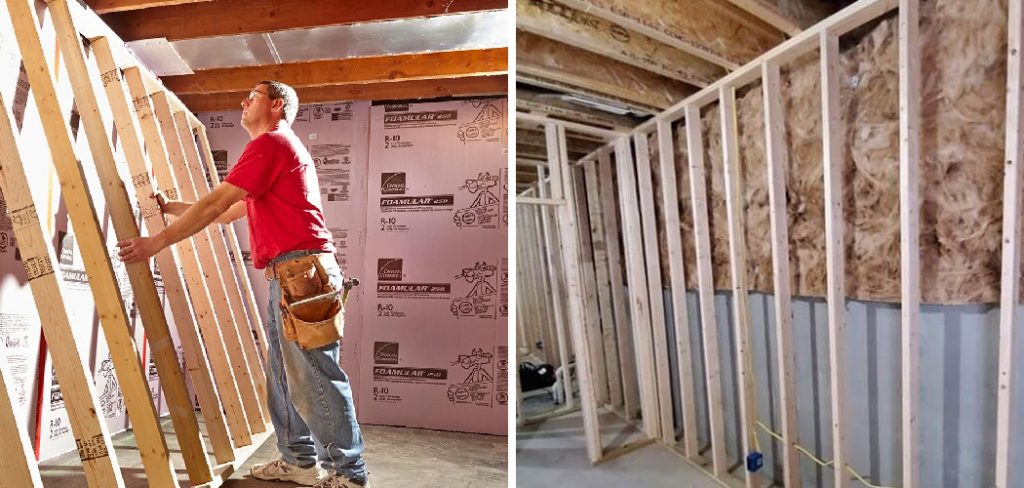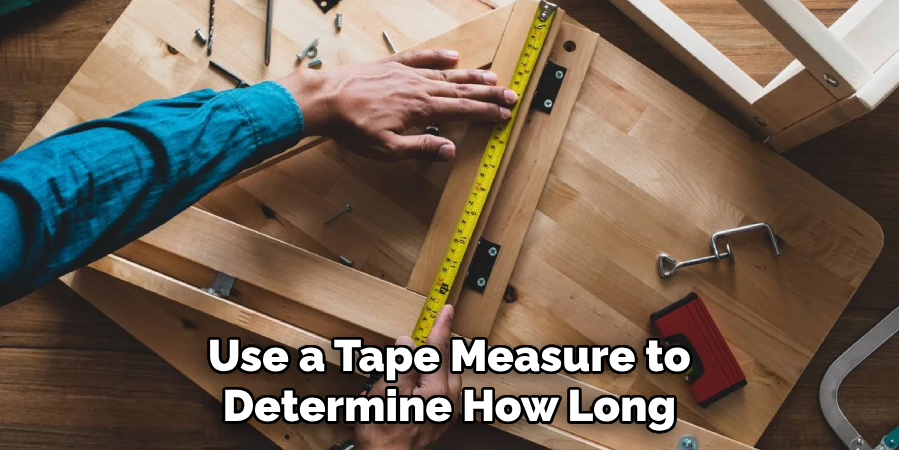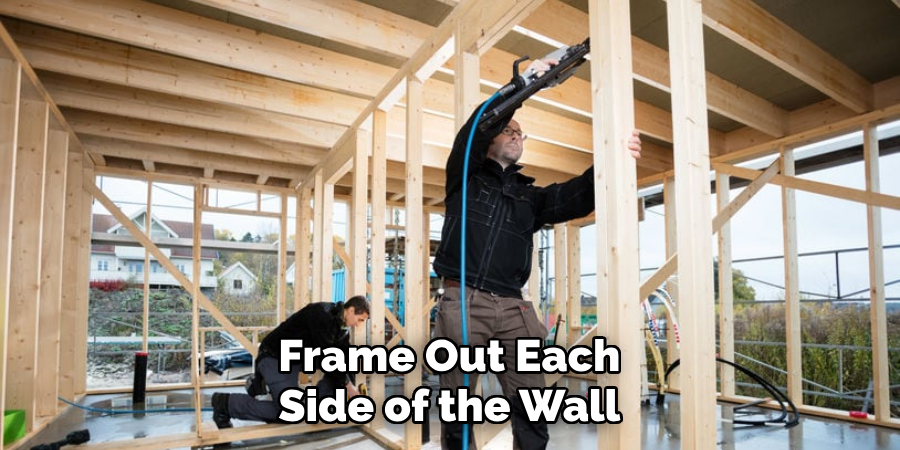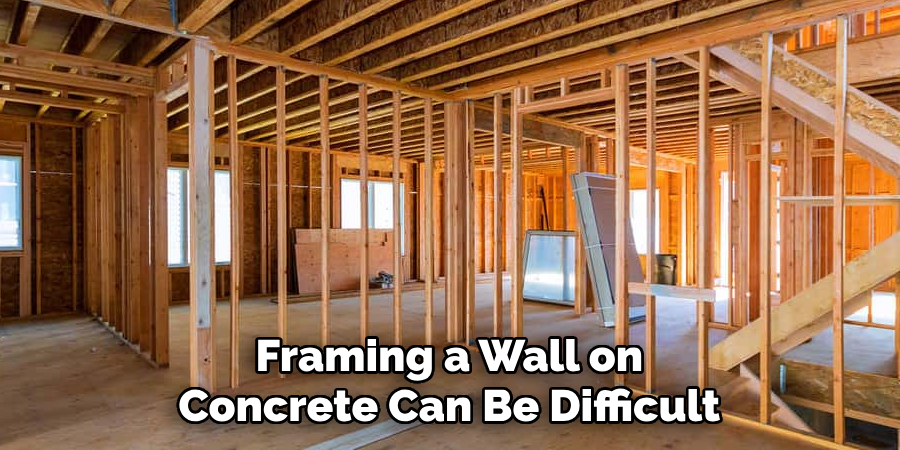Are you a DIY enthusiast looking for the right way to frame a wall in your concrete basement? Frame walls on concrete are an important task when it comes to interior work. Not only do we have to take into account load-bearing weight and how it’s distributed throughout the wall but also factor in the moisture level that could compromise our work.

Understanding these variables can be intimidating, so in this blog post on how to frame a wall on concrete basement, we’ll discuss all you need to know about framing a wall on a concrete surface and how best to approach such projects while making sure your loads are safe and secure!
Pros and Cons:
Given below are the pros and cons of framing a wall on a concrete basement:
Pros:
• Provides Stability to the Frame, Making It Less Likely to Shift or Move.
• Walls Framed on Concrete Offer Improved Insulation, Which Can Save Energy Costs for the Homeowner.
• When Done Correctly, Walls Framed on Concrete Basements Are Very Durable and Long-lasting.
Cons:
• Properly Framing a Wall on a Concrete Basement is Time-consuming and Requires Special Tools and Materials.
• It Can Be Difficult to Frame a Wall on Concrete Due to the Uneven Surface.
• Moisture in the Concrete Can Cause Issues if Not Taken Into Account Before Beginning the Project.
Tools and Materials
The following tools and materials are needed for framing a wall on a concrete basement:
• Hammer
• Tape Measure
• Framing Nails
• Concrete Anchors
• Level
• Circular Saw With a Diamond Blade
• Chalk Line or String Line
• 2×4 Studs for Framing the Wall and Support Posts.
11 Step-by-step Guidelines on How to Frame a Wall on Concrete Basement
Step 1: Determine the Size of the Wall

Use a tape measure to determine how long and wide your wall needs to be in order to fit your space. It’s important to make sure that the wall is structurally sound, so be sure to consider load-bearing weight and other factors when determining its size. But if the wall is simply for aesthetic purposes, then size it according to your tastes.
Step 2: Prepare the Concrete Surface
Prepare the concrete surface for framing by using a hammer and chisel to chip away any uneven areas or loose pieces of cement. Be sure to wear safety glasses and gloves while doing this. This will ensure that the framing is secure and safe. If you find any large cracks in the concrete, use a patching compound to fill them before beginning.
Step 3: Measure and Mark Out the Wall Location on the Floor
Use a chalk line or string line to mark out where your wall will be located on the floor. This will help you stay organized when it comes time to frame it up correctly. Make sure all measurements are level before proceeding forward. But if the wall is not level, use a level to make sure it’s straight.
Step 4: Attach Support Posts at Each Corner of the Wall Location
Attach support posts at each corner of the wall location, making sure they are securely fastened into the concrete and level. This will provide stability to the wall once it is framed. It’s important to use concrete anchors and framing nails when doing this step. It’s also important to make sure that the posts are the same height in order for them to provide the most stability.
Step 5: Cut 2x4s to Size for Framing the Wall
Measure and cut 2x4s to size for framing out the wall, making sure each piece is level before proceeding further. If you are using a circular saw, be sure to use a diamond blade for an even cut. But if you don’t have access to a circular saw, use a hand saw instead. It’s important to wear safety glasses and gloves while sawing.
Step 6: Frame Out Each Side of the Wall with 2x4s

Frame out each side of the wall with 2x4s, using a hammer and framing nails to secure them in place. Make sure you are measuring twice before cutting once, as this will help ensure accuracy when building out your wall. But if the wall is not level, use a level to make sure it’s straight.
Step 7: Secure Support Posts and Top Plate With Concrete Anchors
Secure the support posts and top plate of the wall with concrete anchors, making sure they are level before continuing forward. It’s important to use concrete anchors and framing nails when doing this step. This will provide the most stability for your wall. This step is also important to ensure your wall can take the load-bearing weight.
Step 8: Attach Sheetrock to the Frame
Attach sheetrock to the frame using a hammer and framing nails or screws, depending on your preference. Make sure each piece is securely attached before moving on to step 9. It’s important to wear safety glasses and gloves while doing this step. But if the wall is not level, use a level to make sure it’s straight.
Step 9: Secure Studs With Framing Nails
Using a hammer and framing nails, secure each stud in place, making sure they are properly aligned with one another for stability. It’s important to wear safety glasses and gloves while doing this step. But if the wall is not level, use a level to make sure it’s straight. If the wall is load-bearing, use longer nails to ensure that it’s secure.
Step 10: Check Plumb Line for Levelness
Check the plumb line for levelness by running it up and down each wall Anchors
Secure the support posts and top plate with concrete anchors. This will provide stability to the wall and help keep it from shifting or moving over time. But if the wall is not level, use a level to make sure it’s straight.
Step 11: Finish the Wall

Finish the wall with paint, wallpaper or whatever other type of finish you prefer. This will help protect your framed wall from moisture and give it a more aesthetically pleasing look. Always wear safety glasses and gloves when painting.
But if the wall is not level, use a level to make sure it’s straight. And that’s all there is to know about framing a wall on a concrete basement! With the right tools and materials, and following these simple steps, you can easily frame out a sturdy and secure wall in your basement for any project you have in mind.
Do You Need to Use Professionals?
Framing a wall on a concrete surface is not an easy task and requires some knowledge of construction and carpentry. It’s important to use the right tools and materials to make sure your walls are safe and secure.
If you don’t feel comfortable tackling this project yourself, then it’s best to seek professional help from experienced contractors who have the skills necessary for successful framing projects.
The above guide should help you understand how to frame a wall on a concrete basement correctly. With the right tools, materials, steps, and either DIY expertise or professional help from experienced contractors – you’re sure to get the job done! Good luck with your project!
Frequently Asked Questions
Q: What Are the Benefits of Framing a Wall on a Concrete Basement?
A: Framing a wall on a concrete basement provides stability to the frame, improved insulation, and a long-lasting structure that can stand the test of time.
Q: What Type of Concrete Anchors Should I Use?
A: The type of concrete anchors you should use depends on the weight capacity needed for your project. It’s best to consult with an experienced contractor or building inspector before purchasing the necessary materials to ensure you are using the correct anchors for your needs.
Q: Is Framing a Wall on Concrete Difficult?

A: Yes, framing a wall on concrete can be difficult as there are many steps involved and the uneven surface of the concrete can make it difficult to keep measurements accurate. It is important to have patience when tackling such projects and make sure to double-check the measurements and levels of each part of the wall before continuing.
Q: How Do I Seal the Seams and Gaps?
A: Once the wall is framed, use a caulking gun to seal any seams and gaps between the sheetrock and frame. This will help protect your walls from moisture and drafts.
Conclusion
To conclude, framing a wall on a concrete basement can be a daunting task but with the correct equipment and preparation, it is possible.
Taking the time to do your research, understand the materials required for the job, and plan ahead will ensure success when it comes time to frame your wall. When in doubt, be sure to consult someone who has experience framing walls or contact an expert who can help guide you through the steps.
With patience and dedication, you can build a wall in your concrete basement that will last for years to come. Remember: planning ahead is key!
Take every necessary step on how to frame a wall on concrete basement before you begin to make sure that your wall is safe and secure before moving forward. Best of luck creating a sturdy, reliable base for your project!
